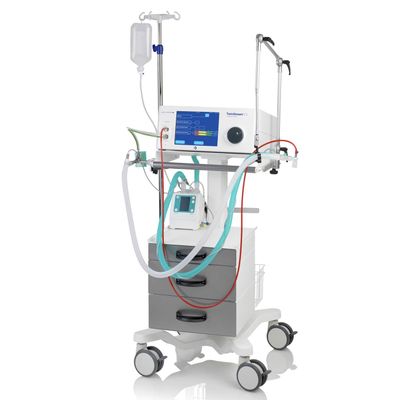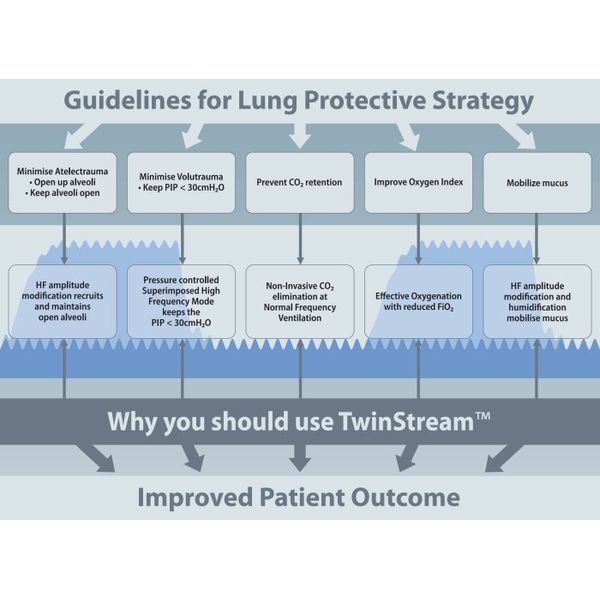

- Home
- Companies
- Carl Reiner GmbH
- Products
- TwinStream ICU - Lung-Protective ...

TwinStream ICU - Lung-Protective Ventilation Device
The Lung-protective Ventilation in Intensive Care for acute ill patients. Offers oxygenation and ventilation with unsurpassed efficiency and safety. It is the only system on the market to offer pulsatile Bi-Level Ventilation p-BLV™ (See infobox). The p-BLV™ module generates a pulsatile gas column. This facilitates optimal gas exchange, respiratory gas conditioning and transmission of the pressure waveamplitude into the lung. This represents a significant advantage over conventional ventilation systems.
TwinStream™ ICU with provides the best ventilation method for patients with:
- Acute respiratory distress syndrome (ARDS)
- Pneumonia (ALI - VILI)
- Severe chest trauma in the context of polytrauma
The best strategy for paediatric intensive care medicine.
Ensures efficient ventilation for each thoraco-abdominal system regardless of the maturity of the lung. During recruitment of non-ventilated areas of the lung, negative haemodynamic effects are significantly less than with other ventilation modes.
TwinStream™ ICU Ideal for young patients with:
- Primary or secondary acute lung injury
- Thoracic Trauma
Pulsatile Bi-Level Ventilation p-BLV™
This innovative mode allows the application of a bi-phasic, timecycled, pressure-controlled, variable flow ventilation, with or without a superimposed pulsatile component. The BLV of 1-100 breaths per minute can thus be supplemented with pulsations from 50 up to 1500 per minute. As a result of the pulsatile component a forced mixing of the respiratory gases is produced at all levels of the respiratory system. The normal frequency (NF) pulse is primarily responsible for ventilation. The high frequency (HF) pulse provides oxygenation, additional alveolar recruitment and haemodynamic stability. There is a background flow (bias flow) of humidified and heated gas at approximately 20 LPM into the inspiratory limb. Against this bias flow the p-BLV™ module applies a counter pressure in the expiratory limb, with or without a pulsatile component. As a result correctly conditioned inspiratory gas passes into the lungs with the optimal flow pattern. Even during long term ventilation adverse cooling or drying effects are not seen.

